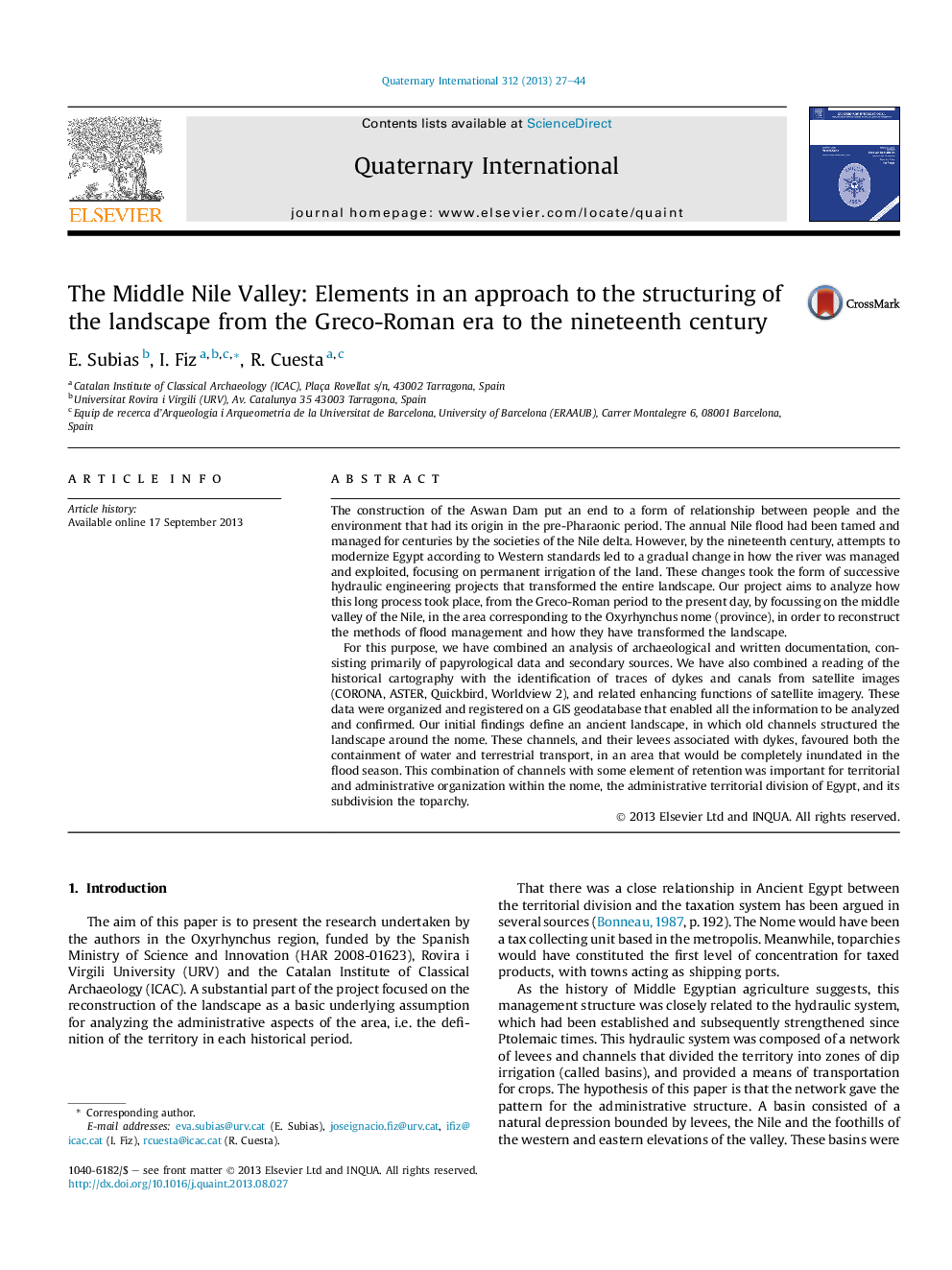| کد مقاله | کد نشریه | سال انتشار | مقاله انگلیسی | نسخه تمام متن |
|---|---|---|---|---|
| 1041926 | 1484178 | 2013 | 18 صفحه PDF | دانلود رایگان |

The construction of the Aswan Dam put an end to a form of relationship between people and the environment that had its origin in the pre-Pharaonic period. The annual Nile flood had been tamed and managed for centuries by the societies of the Nile delta. However, by the nineteenth century, attempts to modernize Egypt according to Western standards led to a gradual change in how the river was managed and exploited, focusing on permanent irrigation of the land. These changes took the form of successive hydraulic engineering projects that transformed the entire landscape. Our project aims to analyze how this long process took place, from the Greco-Roman period to the present day, by focussing on the middle valley of the Nile, in the area corresponding to the Oxyrhynchus nome (province), in order to reconstruct the methods of flood management and how they have transformed the landscape.For this purpose, we have combined an analysis of archaeological and written documentation, consisting primarily of papyrological data and secondary sources. We have also combined a reading of the historical cartography with the identification of traces of dykes and canals from satellite images (CORONA, ASTER, Quickbird, Worldview 2), and related enhancing functions of satellite imagery. These data were organized and registered on a GIS geodatabase that enabled all the information to be analyzed and confirmed. Our initial findings define an ancient landscape, in which old channels structured the landscape around the nome. These channels, and their levees associated with dykes, favoured both the containment of water and terrestrial transport, in an area that would be completely inundated in the flood season. This combination of channels with some element of retention was important for territorial and administrative organization within the nome, the administrative territorial division of Egypt, and its subdivision the toparchy.
Journal: Quaternary International - Volume 312, 29 October 2013, Pages 27–44